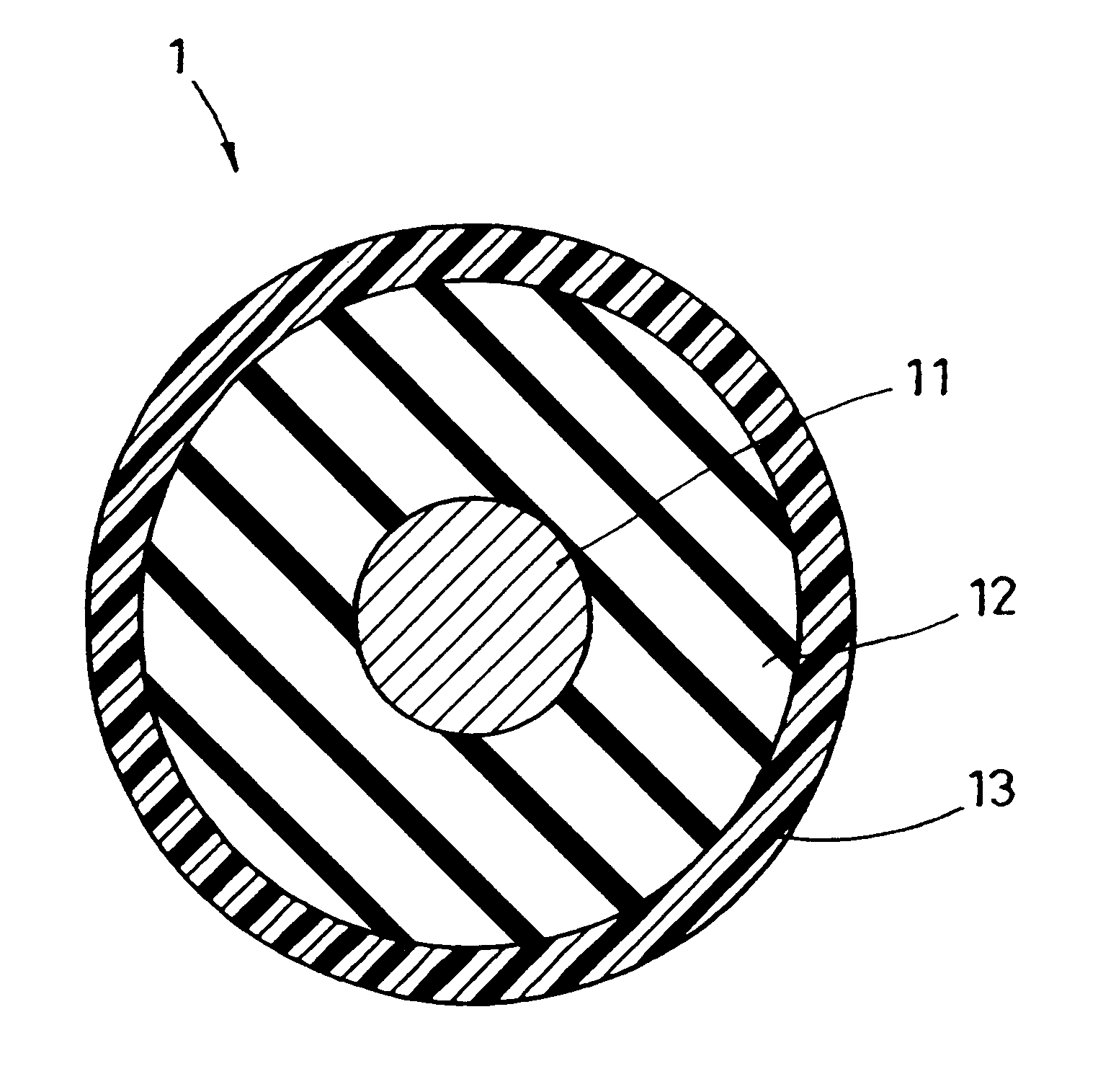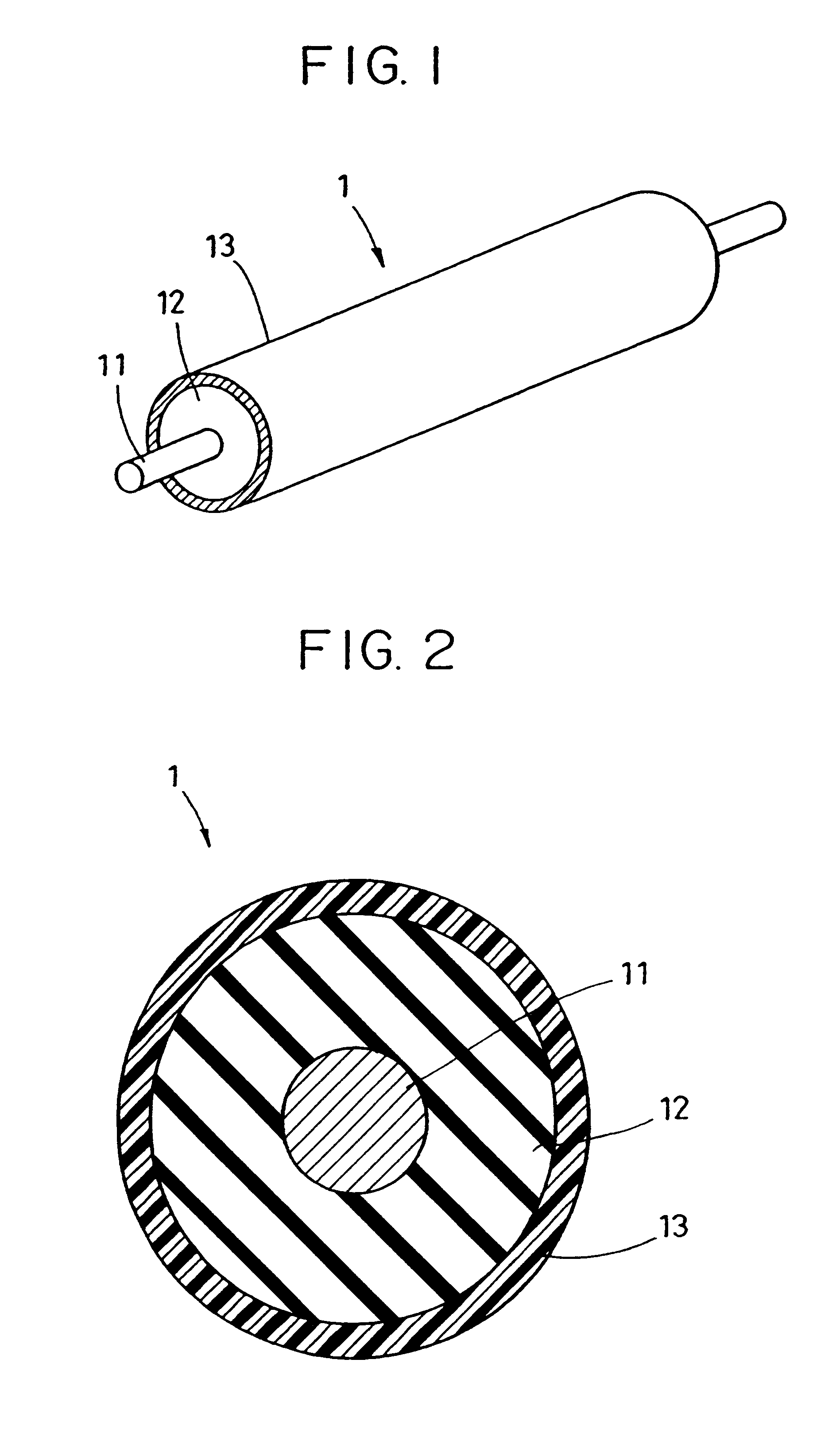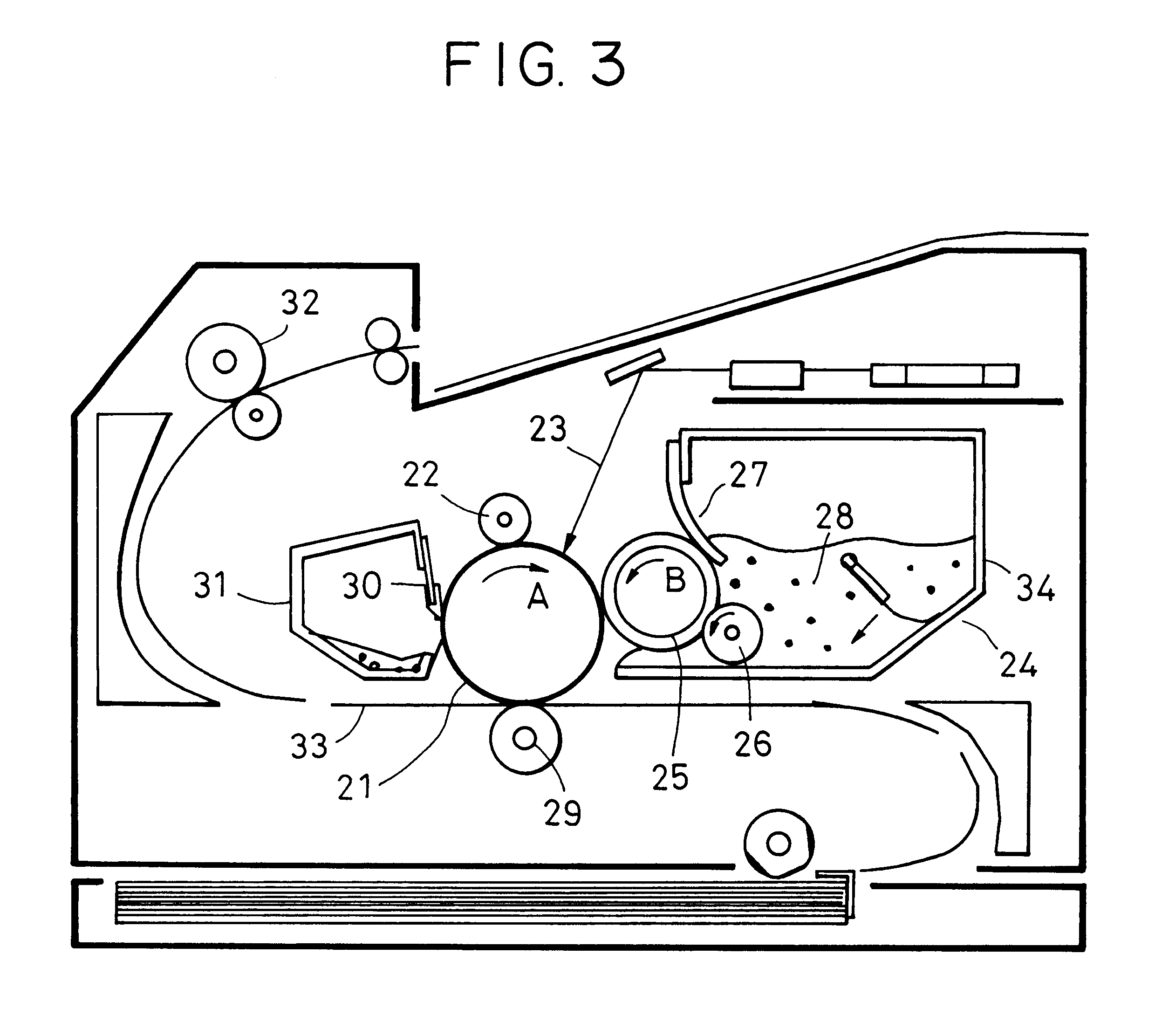Developing roller and developing device using the same
a technology of developing device and roller, which is applied in the direction of instruments, electrographic process devices, optics, etc., can solve the problems of not being provided, unsatisfactory roller surface, and excessive increase in modulus of elasticity
- Summary
- Abstract
- Description
- Claims
- Application Information
AI Technical Summary
Benefits of technology
Problems solved by technology
Method used
Image
Examples
example 1
The core shaft 11 was prepared by plating nickel on a SUS-made core metal, applying an adhesive on a nickel plating, and baking the adhesive. Then, the core shaft 11 was placed in a mold and a liquid silicone rubber material (an additive silicone rubber composition prepared by adding a platinum-based catalyst and organosiloxane having two or more silicon-bonded hydrogen atoms per molecule, both of which served as a cross-linking agent, 0.1 weight % of silica powder as a heat resistance imparting agent in the form of inorganic fine powder, and 30 weight % of carbon black as a conductivity imparting agent, to a polysiloxane mixture consisting of 40 weight % of normal chain polydimethylsiloxane having viscosity of 10000 Pa.multidot.s at 25.degree. C. and closed by terminate vinyl groups, and 60 weight % of a block polymer made up of a branched polysiloxane segment having viscosity of 35 Pa.multidot.s at 25.degree. C. and containing one vinyl group, and a normal chain oil segment contai...
example 2
A developing roller was obtained in the same manner as Example 1 except that the type and weight parts of added carbon black were changed, i.e., that 14 weight parts of carbon black (trade name: #32, by Mitsubishi Chemical Corporation) was added.
example 3
A developing roller was obtained in the same manner as Example 1 except that the type and weight parts of added carbon black were changed, i.e., that 12 weight parts of carbon black (trade name: Printex 60, by Degussa) was added.
PUM
 Login to View More
Login to View More Abstract
Description
Claims
Application Information
 Login to View More
Login to View More - R&D
- Intellectual Property
- Life Sciences
- Materials
- Tech Scout
- Unparalleled Data Quality
- Higher Quality Content
- 60% Fewer Hallucinations
Browse by: Latest US Patents, China's latest patents, Technical Efficacy Thesaurus, Application Domain, Technology Topic, Popular Technical Reports.
© 2025 PatSnap. All rights reserved.Legal|Privacy policy|Modern Slavery Act Transparency Statement|Sitemap|About US| Contact US: help@patsnap.com



